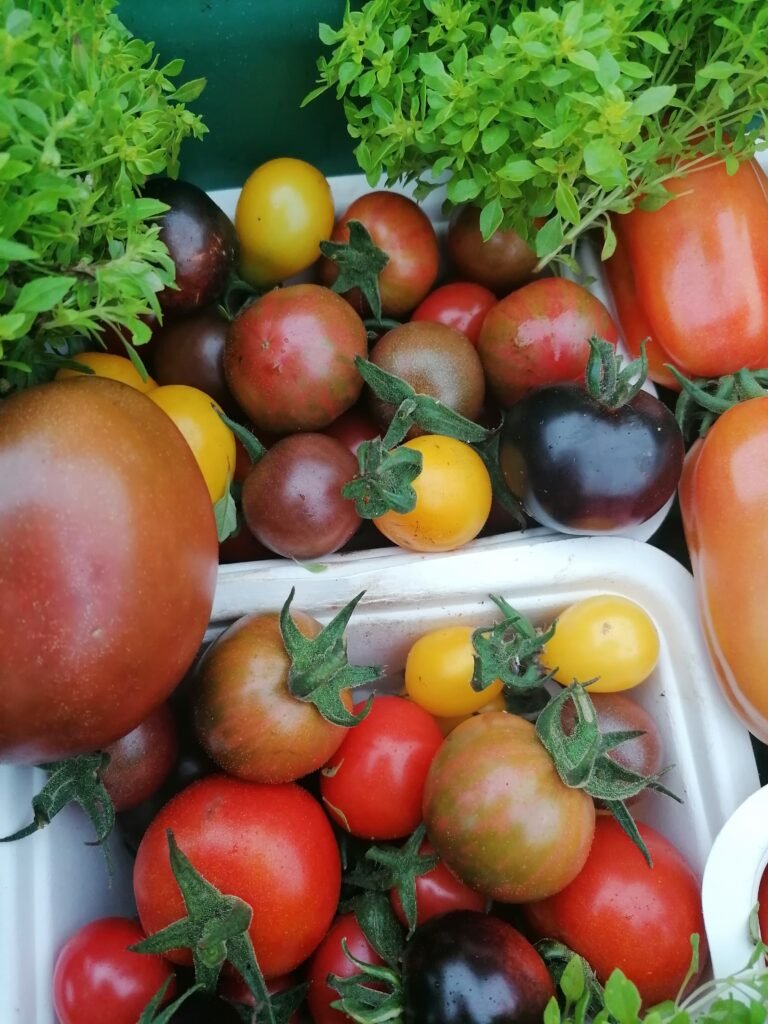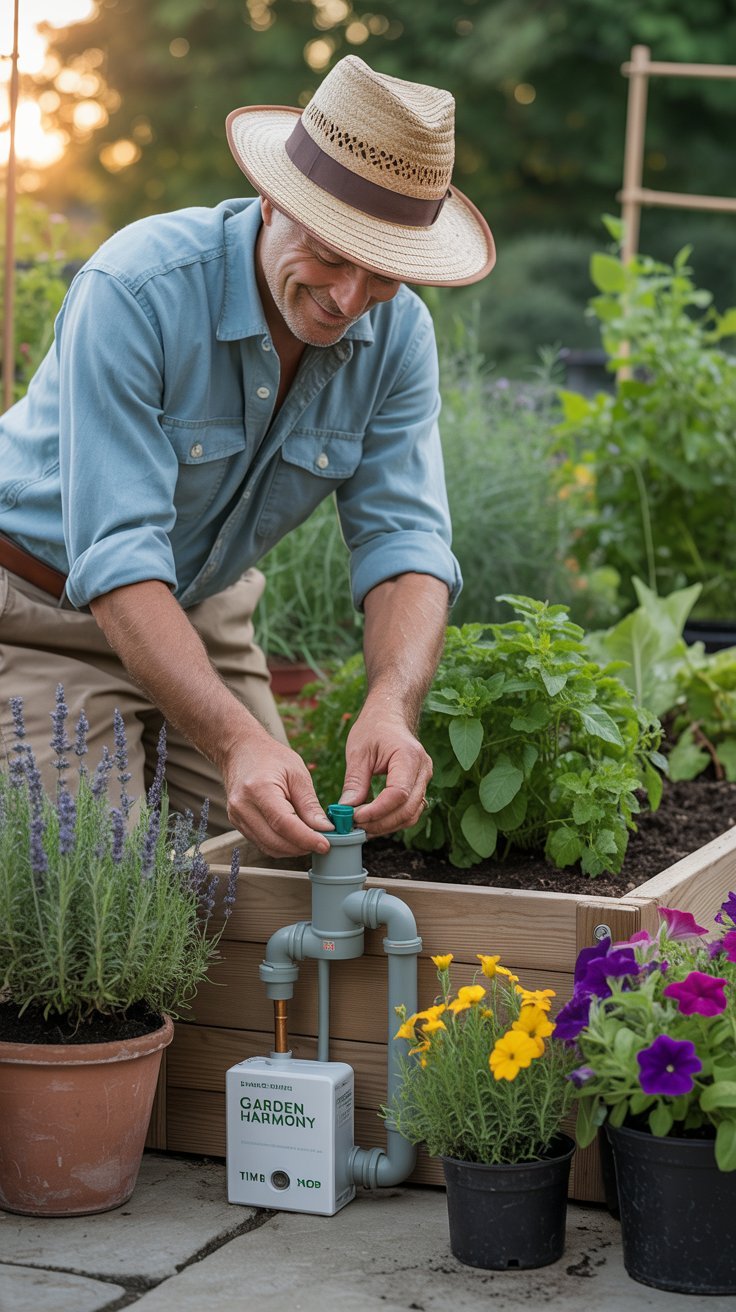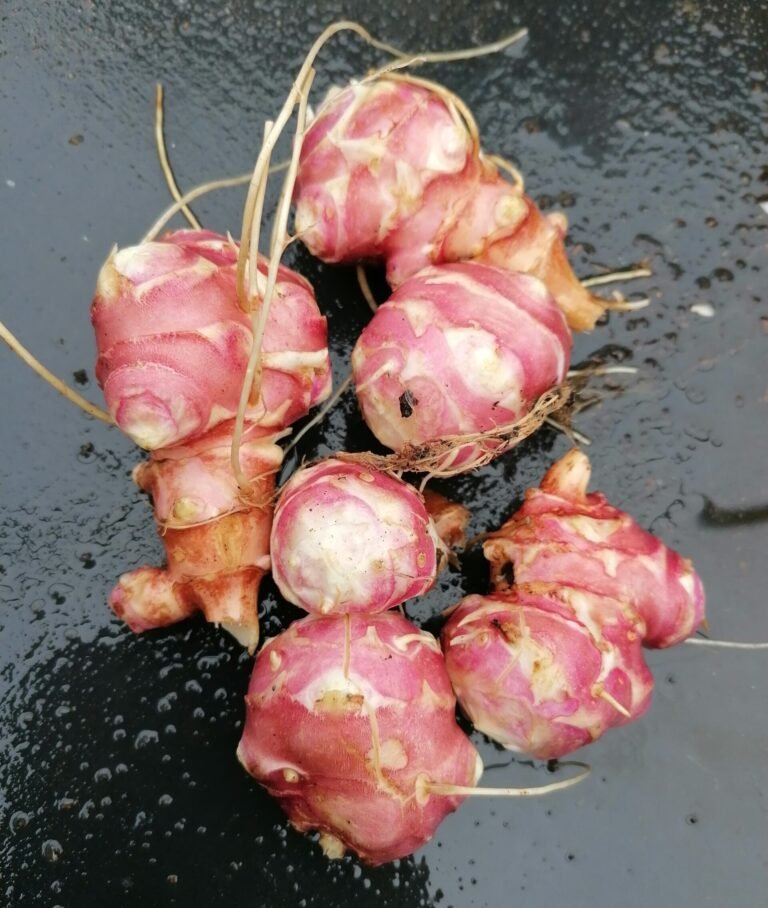


If you’re looking for the best tomato varieties for Irish gardens, trust me—you’ve come to the right place. We’ve been growing tomatoes here every single year, through drizzle, downpours, and the rare, glorious burst of sunshine. And over time, we’ve trialled more varieties than I care to admit (some with spectacular success… and others that were politely escorted to the compost heap).
Through it all, we’ve learned a few things. Namely, which tomatoes truly thrive in our unpredictable Irish climate—those that don’t flinch at cooler nights, that ripen early enough to beat the blight, and that taste like pure summer in every juicy bite. Some are cheerful little cherry tomatoes that never let us down. Others are big, beautiful slicers that have earned a permanent spot in our tunnel. And a few are hidden gems we stumbled across by happy accident, now beloved staples we wouldn’t be without.
Meanwhile, Gar has made it his mission to “quality check” the flavor of every tomato variety right off the vine as he’s working, often disappearing into the greenhouse only to emerge, grinning, with a handful of taste-test winners. (It’s serious business around here.)
So, whether you’ve got a cosy windowsill, a full polytunnel, or something charmingly in between, this guide brings together our absolute favourites—the reliable, the delicious, and the downright hardworking varieties that earn their keep year after year.
Grab a cuppa (or your seed box!) and let’s talk tomatoes—the ones that actually work in Ireland, from our garden to yours.
What Makes a Tomato Variety Ideal for Irish Gardens?
When it comes to choosing the right tomato for Irish soil (and skies), not all varieties are created equal. Our growing conditions are unique—so the tomatoes we grow need to be just as special. Here’s what we’ve learned to look for over the years:
- A short growing season
Because let’s face it—our summers don’t hang around. Early croppers are a must if you want ripe fruit before the weather turns. The sooner a tomato can set and ripen, the better your harvest will be. - Cool, damp summers
While we dream of Mediterranean heat, we usually get grey skies and a bit of drizzle. So varieties that can handle cooler temperatures and keep growing steadily are absolute gems. - Fungal pressure is real
Blight and mildew are regular visitors in Irish gardens. That’s why we favour tomatoes with solid disease resistance—they’re the ones that keep going even when the rest start to struggle. - Tunnel vs. outdoor growing
Where you grow makes a big difference. Some tomatoes need the warmth and shelter of a polytunnel, while others are happy enough out in the elements. Matching the right variety to your setup saves so much heartache. - Flavour, texture, and how you’ll use them
Are you after sweet cherry tomatoes for snacking, juicy slicers for summer sandwiches, or firm types for sauce-making? Knowing what you want in the kitchen helps narrow it all down.
Best Early Cropping Tomato Varieties for Ireland
When you’re gardening in Ireland, getting a head start can make all the difference. With our short summers and slow warm-ups, early cropping tomatoes are worth their weight in gold. These are the ones we come back to time and again—they don’t keep you waiting, and they usually manage to ripen before the weather turns. Here are a few of our favourites:
- ‘Maskotka’
A lovely, low-maintenance bush tomato that starts producing sweet little cherries by mid-July. Great in a pot or tucked into a sheltered spot outdoors. - ‘Red Alert’
This one has earned a permanent spot in our garden. It’s quick off the mark, does brilliantly outside, and keeps the fruit coming over a long season. - ‘Latah’
Super early and surprisingly productive, even without a tunnel. The flavour’s better than you’d expect from such a quick grower. - ‘Siberian’
As the name suggests, this one doesn’t mind a chilly start. It’s bred for short seasons and has a nice balanced flavour—not too sharp.
But it’s not just about the variety. Growing early croppers means you’re more likely to beat late blight and actually enjoy your tomatoes while the weather’s still pleasant! For best results, we like to start seeds indoors in late February or early March—under grow lights or on a sunny windowsill. It gives the plants a real boost and helps you hit the ground running once the days warm up.
Cool-Weather Tolerant Tomatoes That Thrive in Irish Conditions
Not every tomato likes our Irish summers. Let’s be honest—between the cloudy days and the ever-present chance of rain, some plants just sulk. But over the years, we’ve found a handful of cool-weather tolerant tomatoes that don’t seem to mind a bit of drizzle. These hardy types keep growing—and even better, they keep setting fruit—when other varieties slow right down.
- ‘Glacier’
True to its name, this one shrugs off chilly spells. It’s dependable, quick to flower, and doesn’t need endless sun to give you a good crop. - ‘Stupice’
A real gem of a Czech heirloom with a loyal following—and for good reason. It’s early, tolerant of poor weather, and keeps on producing. The flavour’s lovely too—sweet with just enough tang. - ‘Arctic Plenty’
This variety was made for northern gardeners. It’s tough, reliable, and doesn’t complain when the summer skies stay grey. Great for containers or small spaces. - ‘Sub-Arctic Maxi’
One of the earliest tomatoes out there, and surprisingly productive for such a cool-hardy plant. It’s a bit of a secret weapon in challenging seasons.
Even with the right varieties, supporting tomatoes through a wet July takes a little extra effort. We’ve found that keeping the foliage dry, spacing plants for airflow, and mulching around the base helps prevent disease and keeps the roots cosy.
And don’t forget companion planting—basil, marigolds, and even borage can boost tomato growth while deterring pests. Plus, it makes the garden smell amazing!
Disease-Resistant Varieties to Beat Irish Blight and Mildew
If you’ve grown tomatoes in Ireland for more than five minutes, you know the heartbreak of late blight. One minute you’re admiring your lush green plants, the next they’re drooping like wet laundry. But don’t worry—we’ve found some disease-resistant tomato varieties that stand a much better chance against the usual suspects: blight, mildew, and general dampness.
- ‘Crimson Crush’
This F1 hybrid is a bit of a superstar. It’s bred for blight resistance, and it genuinely lives up to the hype. Big, juicy fruits and a strong, healthy plant—what’s not to love? - ‘Ferline’
A great choice for the polytunnel. It handles Irish humidity like a pro and produces steadily right through the season. We’ve had great success with it even in wetter years. - ‘Mountain Magic’
This cherry tomato might be small in size, but it’s a tank when it comes to resistance. Blight? No problem. Cracking? Rarely. It’s one of our go-tos for a trouble-free harvest. - ‘Legend’
A determinate type that keeps its shape and stays relatively compact—ideal if you want tidy rows and minimal fuss. Good resistance and early fruiting, too.
Of course, no variety is completely immune, so prevention still plays a big part. Pruning for airflow, spacing your plants well, and avoiding overhead watering all help reduce disease pressure.
We also swear by a few organic treatments like garlic spray and seaweed tonic, especially during damp spells. And if you’re growing in a tunnel, managing humidity with vents and doors open during the day makes a world of difference.
Personal Favorites from our Own Tomato Trials in Ireland
We’ve grown a lot of tomatoes over the years—indoors, outdoors, in buckets, raised beds, and every strange little corner of the tunnel. Some varieties sulk in our cool, grey summers, while others absolutely thrive. These are the ones we keep coming back to, year after year:
- ‘Gardener’s Delight’
Sweet, productive, and almost impossible to mess up. It’s a tunnel staple for us. The plants pump out handfuls of cherry tomatoes that actually taste like tomatoes—not just water in a red jacket. - ‘Sungold’
This one’s a bit of a show-off—in the best way. The flavor is tropical and complex, like someone snuck a mango into your tomato salad. It does beautifully in the tunnel and tends to outpace everything else. - ‘Costoluto Fiorentino’
Now this beauty is for the romantics. Big, ruffled beefsteaks with rich, deep flavor. It needs warmth and time, so best for tunnel growers, but worth every bit of space it takes up. - ‘Yellow Pear’
A cheerful heirloom that adds a pop of sunshine to your salads. They’re mild and sweet, and the plants just keep going. A real hit with kids, too. - ‘Red Zebra’
Stripey, striking, and absolutely packed with flavor. They’ve done well for us even in slightly off seasons and always spark conversation at the table.
Each of these varieties has earned its spot in our garden through actual trial and error—and plenty of weather-watching, taste-testing, and note-taking. If you’re after flavor, beauty, and resilience, this little list won’t let you down.
Tips for Growing Tomatoes Successfully in Ireland
Tomatoes may be one of the most rewarding crops to grow, but they do ask for a bit of attention—especially in our Irish climate, where summer often forgets to RSVP. Here are a few tried-and-true tips from our own patch that can help you get a cracking harvest:
- Starting seeds indoors: when and how
We usually sow ours between late February and mid-March, depending on the weather and how hopeful we’re feeling that year. Use a heated propagator if you’ve got one—or the warmest windowsill in the house will do. Keep them cosy, moist (but not soggy), and give them as much light as possible. - Potting on, hardening off, and transplanting
Once your seedlings have their first true leaves, move them into individual pots with fresh compost. As they grow, get them used to the great outdoors slowly—hardening off is essential here. A week or two of sheltered afternoons outside works wonders before planting out. - Managing temperatures in tunnels and greenhouses
In spring, make the most of every sunny day by trapping warmth, but keep an eye out for overheating by May. Ventilate well and water in the mornings to avoid humid conditions that invite fungal issues. - Best feeding schedule and compost blends
We start with rich compost (homemade if possible) and feed fortnightly with a seaweed or tomato feed once the first flowers appear. Don’t overdo the nitrogen early on—too much leaf, not enough fruit. - Staking, pruning, and harvesting advice for each type
Bush types like ‘Maskotka’ don’t need much pruning but will benefit from support once fruit sets. Cordons like ‘Gardener’s Delight’ need regular side-shoot pinching and strong stakes or twine. Harvest when the fruit is fully coloured and slightly soft—don’t wait for perfection, or the slugs might beat you to it.
Bringing It All Together: Finding Your Perfect Tomato for Irish Gardens
At the end of the day, the best tomato varieties for Irish gardens are the ones that fit your space, your taste buds, and the ever-unpredictable Irish weather. After years of experimenting—from sweet little cherries to heavy, ribbed beefsteaks—we’ve learned that it’s not just about picking one “perfect” variety. It’s about mixing a few reliable early croppers with a dash of cool-weather champions and a sprinkle of the tough-as-nails types that laugh in the face of blight.
Of course, every growing season teaches us something new. Some summers are kinder than others, and sometimes a tomato that struggles one year becomes the star of the show the next. That’s part of the magic, isn’t it? With a little planning (and a lot of tea breaks spent staring at your plants), you can absolutely grow tomatoes successfully here, whether you’re working with a polytunnel, a greenhouse, or a sheltered corner on the patio.
And if you’re feeling adventurous—because really, why not?—why not throw a few oddballs into the mix? We’ve had great fun growing stripy, fuzzy, and even blue-skinned tomatoes over the years. You can check out some of our favourites in this post on unusual and heirloom tomato varieties!
Here’s to a season of juicy harvests, sunshine (even if it’s borrowed), and the sheer joy of a homegrown tomato, still warm from the vine.






